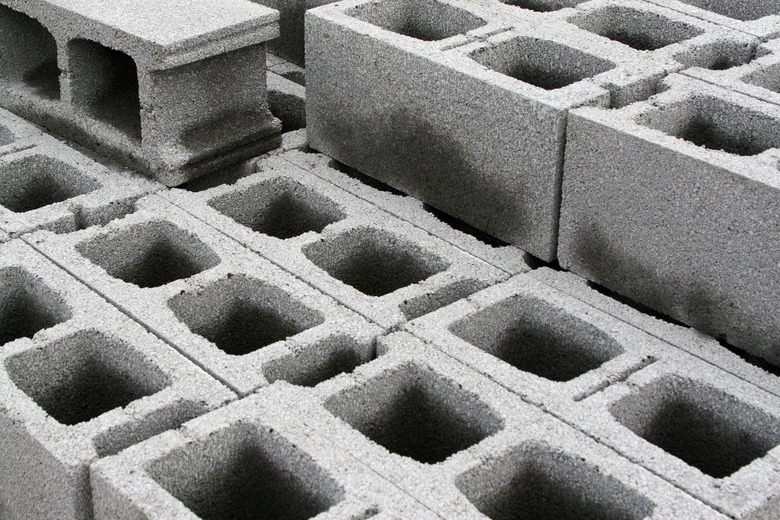Standard Concrete Block Sizes
Concrete blocks are versatile in their use and diverse in their size. They come in a wide variety of sizes for different uses. Before you plan out the footing or get your first batch of concrete blocks to begin a project, you should understand the basic dimensions of these versatile building blocks.
Why Use Concrete Blocks
Why Use Concrete Blocks
A concrete block wall can add height and depth to a garden or outdoor area. They are strong yet hollow. This keeps the weight of the brick at a minimum so the wall is more stable.
The concrete block is designed so that when the wall or edifice is installed, rebar can be placed within the core of the cinder block to reinforce the structure. These hollow cores, which come in sets of either two or three, take up approximately 50 percent of the block's total volume. This can be significant in the ability to build a tall structure without the risk of it toppling over under its own sheer weight.
Concrete blocks are also called cinder blocks. They are also ordered by the professional code of CMU, or concrete masonry units.
How to Decipher the CMU Number
How to Decipher the CMU Number
The CMU has actual and nominal dimensions, just like red clay bricks.
The nominal dimension is the actual dimension of the concrete brick with the width of the mortar joint added. The average mortar joint for a CMU is 3/8 inch. The nominal dimension works within the standard construction materials that follow the 4-inch grid.
How to Decipher CMU Dimensions
How to Decipher CMU Dimensions
To better understand how the nominal size works for CMU block sizes, consider the following:
A 4-inch CMU has an actual size of 3 5/8 inch x 7 5/8 inch x 7 5/8 inch (DxHxL). The nominal size is then 4 x 8 x 8. This is the smallest concrete block size.
Concrete Block Sizes
Concrete Block Sizes
A list of the standard size of CMUs can be helpful if you have any questions about the project or the mortar joint.
4-inch CMU
Actual Size 3 5/8 x 7 5/8 x 7 5/8 Nominal Size 4 x 8 x 8
Actual Size 3 5/8 x 7 5/8 x 15 5/8 Nominal Size 4 x 8 x 16
6-inch CMU
Actual Size 5 5/8 x 7 5/8 x 7 5/8 Nominal Size 6 x 8 x 8
Actual Size 5 5/8 x 7 5/8 x 15 5/8 Nominal Size 6 x 8 x 16
8-inch CMU
Actual Size 7 5/8 x 7 5/8 x 7 5/8 Nominal Size 8 x 8 x 8
Actual Size 7 5/8 x 7 5/8 x 15 5/8 Nominal Size 8 x 8 x 16
10-inch CMU
Actual Size 9 5/8 x 7 5/8 x 7 5/8 Nominal Size 10 x 8 x 8
Actual Size 9 5/8 x 7 5/8 x 15 5/8 Nominal Size 10 x 8 x 16
12-inch CMU
Actual Size 11 5/8 x 7 5/8 x 7 5/8 Nominal Size 12 x 8 x 8
Actual size 11 5/8 x 7 5/8 x 15 5/8 Nominal Size 12 x 8 x 16
Other CMU Size Considerations
Other CMU Size Considerations
Most concrete walls or jobs aren't finished as perfect squares. Aside from the standard full block, there are half sizes. These are measured either vertically or horizontally. These are typically used for lintels, end blocks on walls, design elements or beams.
These can have the same type of hollow cores or be u-shaped. Specialty blocks for doors, window trim, rafter and pipe fittings or other building areas are often smaller and solid. They typically run 2 1/4 x 4 x 8 inches in dimension and are used in place of red clay bricks.
